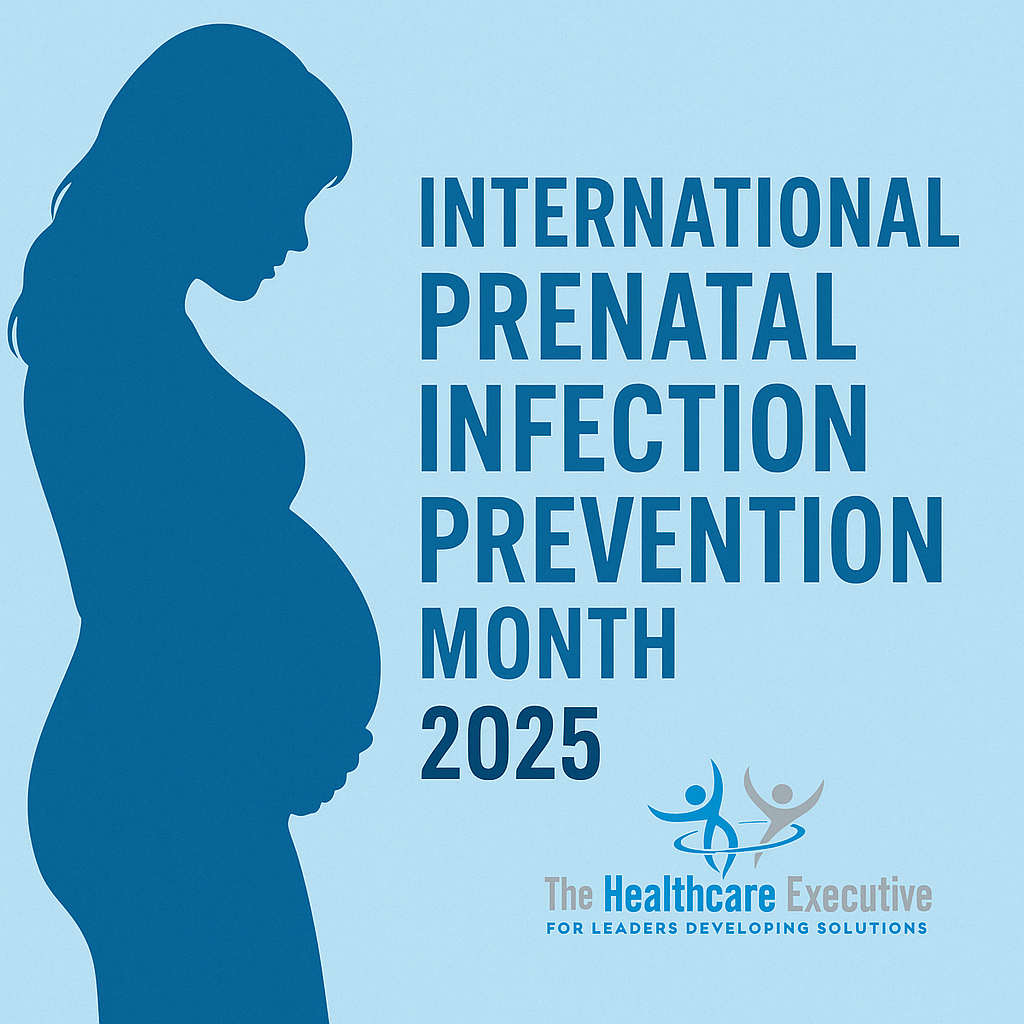International Prenatal Infection Prevention Month 2025

- Posted by Greg Wahlstrom, MBA, HCM
- Posted in Health Observance Calendar
Healthcare Executives Leading the Charge in Maternal Infection Prevention
Published: February 5, 2025
February is recognized as International Prenatal Infection Prevention Month, a global observance aimed at reducing preventable infections in expectant mothers and their unborn children. Infections such as Group B Streptococcus (GBS), cytomegalovirus (CMV), and listeriosis continue to be leading contributors to premature birth, neonatal complications, and infant mortality. Leaders in healthcare must ensure that executive strategy prioritizes preventive efforts, especially for high-risk populations. In 2024, Bon Secours Mercy Health launched a regional prenatal education campaign that incorporated multilingual awareness videos and QR-linked resources in waiting rooms. These real-time educational prompts improved appointment preparedness and boosted maternal engagement. When health systems proactively educate expecting parents, preventable outcomes become rare exceptions instead of tragic norms. For healthcare executives, success in 2025 means integrating digital outreach with clinical governance. Therefore, raising awareness about prenatal infections is a leadership mandate—not just a clinical one.
Preventing prenatal infections requires coordination between clinicians, infection control teams, and operational leadership. The March of Dimes provides clinical toolkits that emphasize hygiene, screenings, and maternal immunizations. These toolkits are especially useful in standardizing infection prevention protocols across multiple departments. Recent studies published by the NIH found that hospital units with hand hygiene prompts and bilingual signage saw up to a 22% reduction in maternal infections. These seemingly small steps can have a major systemic impact when adopted at scale. Hospitals that embed prenatal infection protocols into routine workflows also see better compliance among staff. Infection control is not simply a clinical issue—it is a quality issue tied directly to executive accountability. Thus, executive champions must reinforce maternal infection prevention across every layer of care delivery.
Low health literacy remains one of the most stubborn barriers to preventing prenatal infections. Hospitals and clinics must invest in outreach strategies that connect with at-risk patients long before labor and delivery. Group B Strep International offers free patient guides and risk screening tools that can be customized by health systems. The Kansas Maternal & Child Health Program created prenatal toolkits with visual prompts, magnets, and access to multilingual materials. These tools bridge gaps in maternal comprehension, particularly among Medicaid enrollees and rural populations. Administrators should consider how care navigators and EHR reminders can proactively share these resources during intake or virtual appointments. A data-driven approach—cross-referencing ZIP code risk scores and patient demographics—can further personalize education. By leading these initiatives, executives help build trust where clinical communication alone often fails. In summary, health literacy must be an executive concern.
The Healthcare Executive encourages all health systems to evaluate their infection prevention policies during International Prenatal Infection Prevention Month. From clinical workflows to executive accountability, infection prevention requires alignment across the enterprise. The National Association of County and City Health Officials (NACCHO) emphasizes maternal immunization campaigns as a top strategy for reducing perinatal infection risks. In collaboration with public health departments, hospitals can improve uptake of Tdap and influenza vaccines during prenatal visits. Executive teams must also measure disparities in maternal outcomes, identifying racial, geographic, and language-based barriers that persist. Building maternal dashboards to track infection rates, compliance, and follow-up care should be a 2025 priority. When maternal safety metrics are tied to executive performance evaluations, improvement becomes inevitable. Health leaders have a responsibility to ensure that every expectant mother receives safe, infection-free care. Accordingly, strategic investment now will define the maternal care legacy for decades to come.
DISCOVER MORE
For healthcare executives, February is more than an awareness month—it’s a chance to lead. Evaluate your prenatal infection prevention strategy today and ensure it’s built to protect future generations.
Internal Link:
External Links:



